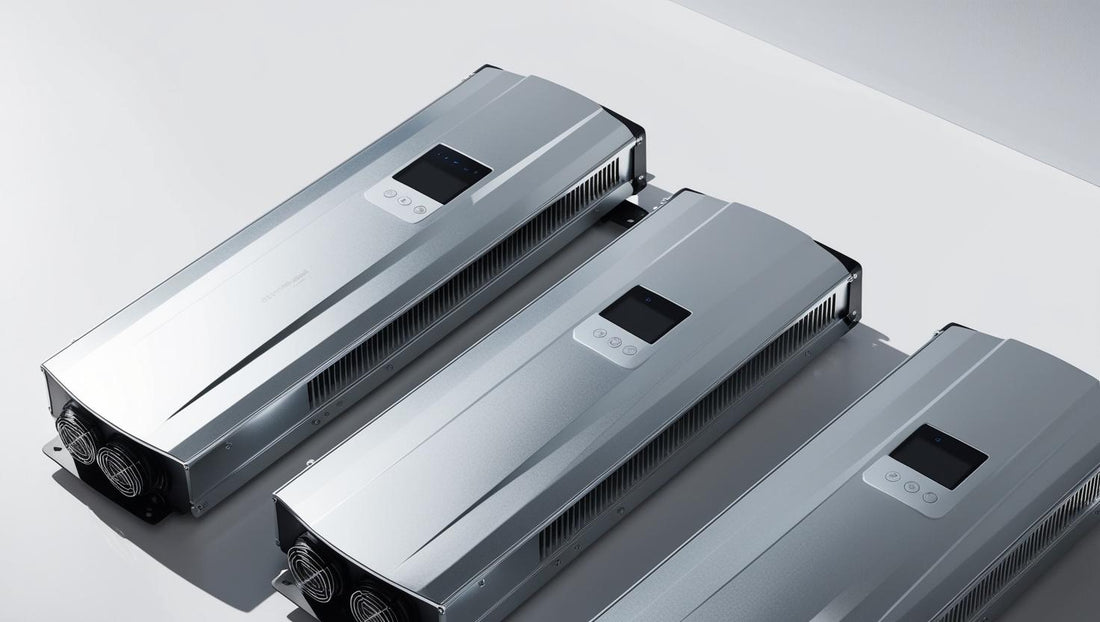
If you’ve been exploring solar energy options for your home or business, you’ve likely come across the term solar inverter. But what is a solar inverter, and how does it work? In this guide, we’ll break down everything you need to know in simple, easy-to-understand language.
What Is a Solar Inverter?
A solar inverter is a key part of a solar power system. Its main job is to change the electricity your solar panels create into a form that your home or business can use.
Solar panels generate direct current (DC) electricity when they absorb sunlight. However, most of your household appliances and devices run on alternating current (AC) electricity. This is where the solar inverter comes in—it converts DC into AC electricity, making it usable for your everyday needs.
Why Is a Solar Inverter Important?
Think of your solar inverter as the heart of your solar power system. Without it, the electricity from your solar panels would be useless for powering your home. Here’s why inverters matter:
-
Conversion: They turn DC electricity into AC electricity.
-
Monitoring: Many inverters keep track of how much energy your system is producing.
-
Safety: They help shut down the system in case of faults or electrical issues.
-
Grid Connection: Inverters manage how your system interacts with the local electricity grid.
How Does a Solar Inverter Work?
Let’s take a closer look at how a solar inverter works:
-
DC Input:
Solar panels collect sunlight and generate DC electricity. This electricity travels from the panels to the inverter. -
Conversion Process:
Inside the inverter, electronic components called semiconductors switch the direction of the DC electricity rapidly. This process changes it into AC electricity. -
Output to Home or Grid:
The AC electricity is then sent to your home’s electrical system, where it powers lights, appliances, and other devices. If you’re connected to the grid, any extra electricity can be sent back to your utility provider (if your area allows it).
Types of Solar Inverters
There are different types of inverters, each suited for different needs:
-
String Inverters:
These connect a group of panels in a “string” to one inverter. They are affordable and widely used but can lose efficiency if one panel is shaded or underperforming. -
Microinverters:
Attached to each panel individually, microinverters allow each panel to work independently. This improves performance, especially in shaded areas. -
Hybrid Inverters:
These can handle both solar panels and battery storage, making them a good option if you want to store excess energy.
Key Features to Look For
When choosing a solar inverter, here are some important features to consider:
-
Efficiency: Higher efficiency means less energy loss during conversion.
-
Monitoring: Look for inverters with built-in monitoring systems that let you track your system’s performance online.
-
Warranty: A good warranty (10 years or more) offers peace of mind.
-
Battery Compatibility: If you plan to add battery storage later, choose a compatible inverter.
Where Is the Inverter Installed?
Solar inverters are typically installed near your home’s main electrical panel. They can be placed indoors (such as in a garage) or outdoors in a weatherproof box. It’s important to keep the inverter in a cool, shaded area to ensure optimal performance.
How Long Do Solar Inverters Last?
Most solar inverters last between 10 to 15 years. Regular maintenance and monitoring can extend their lifespan. Some premium brands offer extended warranties of up to 20 years.
Common Problems with Solar Inverters
While inverters are reliable, they can sometimes face issues, such as:
-
Error Messages: Displaying faults or warning lights.
-
Reduced Output: A drop in electricity production.
-
Overheating: Inverters need good ventilation to prevent overheating.
If you notice any of these signs, it’s a good idea to contact a professional to check your system.
Benefits of a Good Solar Inverter
A high-quality inverter can make a big difference in your solar power experience. Benefits include:
-
Better Energy Efficiency: Maximize the use of your solar power.
-
Improved Safety: Advanced features reduce risks.
-
Detailed Monitoring: Track your energy production and detect problems early.
-
Grid Support: Helps you export extra energy smoothly.
Conclusion
A solar inverter is an essential part of any solar power system. It transforms the sunlight captured by your panels into usable electricity for your home or business. By understanding how inverters work and what to look for when choosing one, you can ensure your solar power system runs smoothly and efficiently for years to come. Whether you’re new to solar or planning an upgrade, a reliable inverter is key to making the most of your investment.








